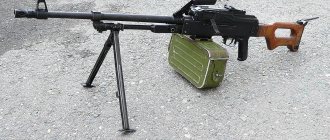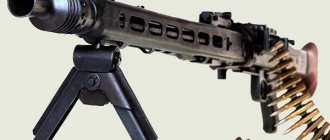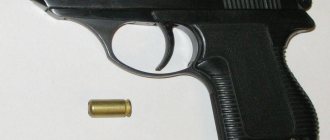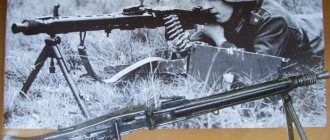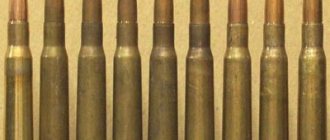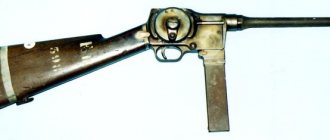Visits of world leaders and celebrations of national holidays today are not complete without the participation of a guard of honor. This ceremony is a mandatory attribute and symbol of state power, emphasizing the high rank of an event or event. Moscow, the capital of the Russian state, is the main center and place where the honor guard is most often seen in action. At the Tomb of the Unknown Soldier memorial, where the eternal flame burns, there is post No. 1. It is here in the Alexander Garden, near the Kremlin wall, that every day from 8 a.m. until 8 p.m., soldiers of the Honor Guard Company of the 154th separate commandant’s Preobrazhensky Regiment perform guard duty. Post No. 1 was established in 1997 in accordance with the Decree of the President of the Russian Federation Boris Yeltsin.
Eternal flame
You can watch the ritual of the changing of the guard for hours without taking your eyes off it. Second by second, in any weather, the guard of honor changes. The soldiers follow a measured, well-honed step along the Kremlin wall, covering a distance of 700 meters, from the Kremlin’s Spasskaya Tower to the Tomb of the Unknown Soldier memorial. Hundreds of people always gather to watch the ceremony. Particularly impressive is the Kremlin step with which the military personnel move along the entire route. This movement has been brought to perfection by the soldiers who serve in the Honor Guard Company. The distance from the toe of the boot to the ground should not exceed 20 cm. The step is carried out only with straight legs, which should always have a straight line when lowering. This practice has taken root in the Russian army since tsarist times. No army in the world has such a military step. The honor guard soldier, dressed in the brilliant dress uniform of the Preobrazhensky Regiment, is the hallmark of the Russian capital. No less important are the other functions performed by the military personnel of the 1st and 2nd honor guard companies.
A little history
The new unit appeared at the end of November 1956. It was then, by Order of the Minister of Defense Georgy Konstantinovich Zhukov, that a new military unit was founded - the 1st honor guard company. The tasks of the new military unit included guard duty, ceremonial and protocol actions. The company, together with another unit - the honor guard band - came under the jurisdiction of the military commandant's office of the Moscow garrison.
Winter uniform
Both new military formations were located in the Aleshensky barracks, which were located in the South-East of the city. I.M. was appointed the first commander of the unit. Slavin. From this moment on, not a single ceremonial event in Moscow, not a single ceremony to welcome foreign guests, is complete without the participation of PKK soldiers. An important component of protocol events and the observance of military rituals is the honor guard orchestra, which participates in all significant events and ceremonies. Both units harmoniously complement each other, being exemplary military structures of the Russian army today.
Over more than half a century of history, the honor guard company has taken part thousands of times to provide ceremonial actions during government meetings, socio-political events and for garrison service. Even during the Soviet Union, the PKK had a lot of work to do. The volume of representative functions increased, the number of protocol events increased, in which the mandatory participation of the guard of honor and garrison servicemen was provided for.
The Main Headquarters of the Ground Forces in 1979 issued a directive on the basis of which the 154th separate Commandant Regiment was created. The 99th separate commandant battalion and a separate honor guard company were used as the base unit. From that time on, the 154th Commandant Regiment consisted of two commandant service battalions, an honor guard and combat support unit. The Commandant Regiment consisted of 880 personnel and was equipped with specialized military equipment.
Victory Banner
The honor guard was actively involved during the meeting of the Heads of the Ministries of Defense of the Warsaw Treaty Organization countries, held in Moscow in 1981. PKK soldiers stood guard around the clock at all posts in the city during the Moscow Olympics. However, the military personnel of the commandant service faced many difficult trials. During large-scale fires that burned within the Moscow region, the entire 154th Commandant Regiment took part in eliminating fires and the consequences of the riot of fire. Honor guard soldiers were involved in giving military honors during the funerals of prominent military and political figures of the Soviet state. Who among us does not remember reports from mourning ceremonies, during which an important role was played by the guard service units of the Commandant Regiment.
A permanent post in the funeral hall, a procession behind a gun carriage with the coffin of the deceased, and finally, a funeral salute at the walls of the Kremlin - all this was the mandatory functions of the military personnel of the commandant’s regiment.
An example of the maximum degree of unification - the RPK machine gun
In the early 50s, gunsmiths were tasked with developing a complex consisting of a new machine gun and a light machine gun. Both samples had to have the most similar design using common components and parts. The terms of reference implied that the new machine gun would replace the existing AK machine guns, and the machine gun unified with it would replace the Degtyarev RPD light machine gun. The development and use of weapons chambered for the same cartridge would greatly simplify the supply of ammunition to troops. In 1953, the Main Artillery Directorate (GAU) developed tactical and technical requirements for a new family of small arms chambered for the 7.62x39 mm intermediate cartridge. Several of the country's leading gunsmith designers took part in the competition to create new small arms. Mikhail Timofeevich Kalashnikov presented two types of weapons for the competition - a modernized AKM assault rifle and an RPK light machine gun. The result of the tests was the adoption of the Kalashnikov AKM assault rifle into service by the Soviet Army, which to some extent predetermined the choice of a new light machine gun: the Kalashnikov model was adopted for service two years later. During this period, the designer made changes to the machine gun model in order to improve the characteristics of the weapon while properly maintaining the necessary unification conditions. At the request of the customer, the new light machine gun had to replicate as much as possible the design of the machine gun being developed simultaneously with it. As a result, the RPK designed by M. T. Kalashnikov was in many ways similar to the AKM assault rifle. Naturally, the design of the machine gun also had some differences associated with its use. Thus, to increase fire efficiency, the machine gun was equipped with a 590 mm long barrel. The use of an increased barrel length made it possible to achieve an initial bullet speed of 745 m/s.
RPK with a drum magazine for 75 rounds
Performance characteristics of the RPK machine gun Weight with loaded drum magazine - 5.6 kg; machine gun length - 1040 mm; cartridge - 7.62x39; rate of fire - 600 rounds per minute; initial bullet speed – 745 m/s; sighting range – 1000 m.
The main part of the RPK machine gun is the rectangular receiver. To access the firing mechanism (trigger mechanism) and other components, the receiver is equipped with a removable cover with a latch in the rear; a barrel and a gas outlet tube with a piston are attached to the front of the receiver - just like a Kalashnikov assault rifle. In order to achieve the maximum possible unification with the machine gun, the machine gun received a trigger-type trigger, allowing automatic and single fire. To increase the service life of the barrel and protect various automatic parts of the machine gun from corrosion, chrome plating was used. This coating was given to parts that are most affected by powder gases when fired: the barrel bore, the inner surface of the chamber, the gas piston, the bolt frame rod. To hold the machine gun when firing, a wooden fore-end and a pistol grip are used; the machine gun is equipped with a wooden butt, the shape of which was partially borrowed from the RPD machine gun. When shooting prone or with the bipod resting, the machine gunner could hold the weapon by the thin neck of the butt with his free hand, which had a positive effect on the accuracy and accuracy of fire. On the barrel of the machine gun there is a bipod mount. In the transport position, the bipods are folded along the barrel; in the unfolded position, the bipods are held by a spring. Shooting from the RPK is carried out with various intermediate 7.62x39 mm cartridges of the 1943 model: with ordinary bullets with a steel core, tracer and armor-piercing incendiary bullets.
The RPK machine gun is fed with ammunition from specially designed two types of magazines: a double-row box magazine with 40 rounds and a drum magazine with 75 rounds. If necessary, you can also use magazines from Kalashnikov assault rifles. The widespread unification of components and parts of the RPK light machine gun with the already mastered AKM assault rifle has greatly simplified the production of the machine gun and its study among the troops. In 1974, in connection with the advent of a new caliber of small arms, the RPK-74 machine gun chambered for the low-pulse intermediate cartridge 5.45x39 was adopted. However, there is also an option chambered for 7.62x39 - the Kalashnikov light machine gun, the modernized RPK-203. Since its introduction into service, the Kalashnikov RPK light machine gun has for a long time been the lightest machine gun in the world, having established itself as an effective, reliable, small-sized weapon, simple and easy to use. The RPK was adopted by the armies of more than 20 countries around the world, and in some countries variants of the machine gun and its copies are still produced. Sergey Volkov, based on materials from open sources.
Honor guard in the history of modern Russia
In the history of modern Russia, the place of the commandant service is no less important. Already in 1991, at the highest level, it was decided to form an honor guard battalion within the 154th separate Commandant Regiment, consisting of two units: the 1st and 2nd honor guard companies.
Since 2013, by Decree of the President of the Russian Federation, the Commandant Regiment received the honorary name Preobrazhensky and became known as the 154th separate Commandant Preobrazhensky Regiment. This is a tribute to traditions, when, under Peter I, soldiers and officers of the Preobrazhensky Life Guards Regiment carried out guard duty. Today, the Commandant Regiment is stationed in the Lefortovo barracks and has its own new dress uniform, very similar to the one worn by the guards back in the tsarist era.
Orchestra
Today, honor guard companies continue to be elite units of the Russian armed forces. Service in this unit is always honorable and prestigious. Despite the apparent brilliance and brilliance, service in the guard units is not easy. In order for the honor guard to look appropriate, soldiers of the commandant's regiment spend 5-6 hours daily in grueling training. It is not easy to achieve well-regulated actions during the changing of the guard, to have the appropriate bearing and posture. In addition to drill training, soldiers are trained to use personal weapons. Traditionally, the commandant's units are armed with the Simonov automatic self-loading carbine, a constant companion of the honor guard soldiers for the past 50 years. This weapon has already become a symbol and calling card of the guard service. Along with participation in ceremonies and events, soldiers of the commandant companies perform combat service in the usual manner of a military unit.
Not everyone can get into this elite unit. In addition to good physical data, height not lower than 180, the recruit is required to have perseverance, steely endurance and patience. During strict selection, attention is paid to the psychological state of military personnel. Despite the fact that the units carry out combat service in urban conditions, the soldiers suffer no less hardships and hardships here than in combat units.
Drill
You should especially focus on drill training. Before shining in parades and during ceremonies, soldiers practice perfecting their step for a long 4 months. Every day, morning, lunch and evening, there are trainings in which soldiers carry out the same drill commands hundreds of times.
RPK light machine gun
The idea of unifying the automatic small arms of a platoon and squad based on one system in the USSR was worked out back in the 20s under the leadership of Fedorov, and after the adoption of the intermediate cartridge of the 1943 model of 7.62 mm caliber, they took a clear direction to select and develop a base model for further unification . As a result, the Kalashnikov assault rifle became such after its modernization. In 1956, several light machine guns and “light” machine guns were tested - the Kalashnikov (Izhevsk), Konstantinov (Kovrov), Korobov (Tula) systems were presented at the competition, and the Korobov machine gun was powered by a belt. In 1959, the USSR Army adopted the AKM assault rifle, and in 1961, the RPK light machine gun (product index 6P2, “Kalashnikov light machine gun”), created on its basis.
The design of the RPK is almost similar to that of a machine gun; their components and parts are for the most part interchangeable. The main differences are an elongated heavy barrel, folding bipod and a larger capacity standard magazine. The barrel, whose length is 590 millimeters, made it possible to increase the effective firing range to 800 meters. Increasing the magazine capacity and increasing the thickness of the barrel walls allows for more intense fire. When shooting from a rest, the bipod improved accuracy.
The automation implements a scheme for removing powder gases through a side hole made in the barrel wall. By turning the bolt, the barrel bore is locked, while a pair of bolt lugs fit into the grooves of the receiver. The gas piston and rod with the bolt frame are rigidly connected. The bolt frame is the leading element of the automation: the frame sets the direction of movement of the moving parts, absorbs most shock loads, and the return spring is placed in its longitudinal channel. The reloading handle and bolt carrier are made as one piece and are located on the right. During a shot, the powder gases move into the gas chamber, and the bolt frame and gas piston begin to move backwards. After the frame moves to the required distance, the exhaust gases escape into the atmosphere through holes opened in the gas tube. The bolt frame travels a certain distance before the pressure drops, after which the bevel made on its inner surface presses on the bolt protrusion with its edge and rotates it. When the bolt is unlocked, a preliminary rotation and “movement” (displacement) of the cartridge case located in the chamber occurs. This reduces the adhesion of the cartridge case and the walls of the chamber, and also prevents its rupture during subsequent extraction. After disengaging the bolt and receiver, the spent cartridge case is removed using a spring-loaded ejector. The bolt and bolt carrier begin to move backward, cocking the hammer and compressing the return spring. The spent cartridge case, after hitting the hard reflector of the receiver, flies out through the receiver window to the right. Having reached the rear extreme point, the bolt and bolt frame move forward under the action of the return spring, the next cartridge is captured by the bolt and sent into the chamber. The bolt frame stops moving, and the bolt continues to move forward under the influence of inertia, turning along the bevel of the frame, locking the barrel bore. The relatively large weight of the bolt frame with a relatively light bolt, as well as the suspended position of the moving parts in the receiver with relatively large gaps, made it possible to ensure the operation of the system even in very dusty conditions. In addition, the bolt is covered by the bolt carrier, thus protecting it from clogging and impact. The rear stop of the recoil spring guide rod is the latch of the stamped lightweight receiver cover.
Iraqi soldiers train to fire PKK guns
Trigger impact mechanism with a trigger rotating on an axis and a U-shaped mainspring, which is made of double twisted wire. The trigger mechanism allows for single and continuous fire. A single rotary part is a translator (switch) of fire modes and a double-action safety lever: being in the safety position, the trigger is locked, the sear of continuous and single fire is locked and prevents the bolt frame from moving backward, partially blocking the groove between the receiver cover and the receiver. In this case, the bolt can be pulled back to inspect the chamber, but its travel is not enough to cock the hammer and chamber the next cartridge. All parts of the trigger mechanism and automation are compactly mounted in the receiver, which thus plays the role of the trigger housing. The receiver was made by stamping, some parts were made by lost wax casting and powder metallurgy.
The experimental light machine guns had a slightly modified butt of the machine gun, but for the production model the shape of the butt of its predecessor, the RPD machine gun, was taken. When shooting from a rest, the thinned neck of the butt makes it possible to grasp it with your left hand. The sight has a mechanism for lateral corrections for target movement or wind. Firing from a point-blank position made it possible to do without a compensator. The magazine power system, inherited from the machine gun, forced the development of larger capacity magazines - a sector box with a capacity of 40 rounds and a drum (disc) with a capacity of 75 rounds. RPK and automatic magazines (capacity 30 rounds) are interchangeable.
Mongolian soldier with PKK
Several types of cartridges can be used for firing: with an ordinary “PS” bullet having a heat-strengthened steel core (bullet weight 7.9 grams, cartridge index 57N231), “T-45” tracer bullet (bullet weight 7.45-7.67 grams , the warhead is painted green), armor-piercing incendiary "BZ" (bullet weight 7.47-7.87 grams, the warhead is painted black and has a red belt), incendiary (bullet weight 6.47-6.8 grams , the head part is painted red). The mass of a cartridge with an ordinary bullet is 16.2 grams, and the gunpowder charge is 1.8 grams. Fire can be fired from a bipod or from the hands with the butt resting on the shoulder. Shooting from a belt “from the hip” is allowed while moving - it does not provide aiming, but at a certain moment in the battle it can have a psychological effect on the enemy, which explains the preservation of this method from the First World War to the present day. Shooting from a closed bolt does not increase the risk of spontaneous firing as a result of heating the chamber if the fire is fired in short bursts.
For the Airborne Forces, they developed the RPKS model, which has a butt folding to the left of the same shape as the RPK. The folding stock is secured in the firing position using a special latch. As a result, the RPKS was 0.3 kg heavier than the RPK. For the RPK and RPKS light machine guns, modifications were created for the RPKN and RPKSN, respectively, which were adapted to install a night sight. The RPK and RPKS machine guns became support weapons for the airborne (motorized rifle) squad. In some conflicts, the RPKN equipped with an optical sight was used as an “ersatz” sniper rifle - this became possible due to the fact that the light machine gun inherited the single-fire mode from the basic machine gun.
The widespread unification of parts and components with the AKM, already mastered in production, has greatly simplified the production of the RPK light machine gun, as well as its study by the troops (especially since the Kalashnikov assault rifle system is one of the easiest to master and study). Ease of repair, disassembly and maintenance is also important. Thoughtfulness, technological and constructive perfection, unique elegance and comparative simplicity of the design with the widespread use of the principle of multifunctionality of parts determined high reliability of operation in any conditions. Vyatskopolyansk Machine-Building Plant became the main manufacturer of RPKs.
Designers K.T. Kurenkov and N.F. Makarov, based on the RPK, developed a “curved-barreled” tank machine gun with a bullet trajectory deviation of 90°, but it was not accepted, although subsequently they tried to use these machine guns in caponier installations. During the landslide conversion, he released the Vepr hunting carbine based on the RPK light machine gun - after several years of improvements, this unique example of transferring machine guns to the “hunting” area gave an excellent result.
The RPK light machine gun has been adopted by the armies of more than 20 countries. Variants or copies are produced in some countries. For example, in Yugoslavia, light machine guns of the “Kalashnikov system” 72В1 were produced chambered for 7.62×39, which was distinguished by the introduction of fins on part of the barrel length and 72АВ1 with a metal butt. The export modification of the 77B1 machine gun chambered for the 7.62×51 NATO cartridge was equipped with a different shaped box magazine and a carrying handle. Together with the 80 and 80A assault rifles, as part of the 5.56x45 (M193) family of weapons, the 82 model light machine gun had a permanent stock and the 82A folding machine gun, both models had a carrying handle. In turn, Yugoslav machine guns were supplied to some countries - for example, the M72B1 came to Iraq. Chinese copies of Type 73 and 81 have retained the general design of the RPK light machine gun, but have a number of differences. The M78 Valmet light machine gun was produced in Finland.
Technical characteristics of the RPK light machine gun:
Cartridge – 7.62×39; Machine gun weight without magazine 4.8 kg; The weight of the machine gun with a loaded magazine for 40 (45) rounds is 5.6 kg; The weight of the machine gun with a loaded magazine of 75 rounds is 6.8 kg; Machine gun length – 1040 mm; Barrel length – 590 mm; Number of grooves – 4; Rifling pitch – 240 mm; Initial bullet speed – 745 m/s; Muzzle energy – 2192 J; Rate of fire – 600 rounds per minute; Combat rate of fire - 150 rounds per minute; Sighting range – 1000 m; The range of a direct shot at the chest figure is 365 m; The range of a direct shot at a tall figure is 540 m; The lethal range of the bullet is 1500 m; The maximum flight range of a bullet is 3000 m; Magazine capacity - 40.75 rounds.
Valiant Labor
The guard of honor is always the calling card of the armed forces. It brings together a tribute to the military traditions of the state and demonstrates the current fighting spirit of the armed forces. In any state, special importance is attached to the formation and equipment of these units. The ceremony, which involves soldiers and members of the honor guard company, is akin to a tactical operation, where every second is scheduled and determined by action. Behind the beautiful screen of the parade formation lies enormous work, great physical, moral and psychological stress.
In hot or cold weather, the soldiers of the commandant's regiment stand at their post, leaving it only at the appointed time. Hours of training in preparation for military parades will result in a minute-long ceremonial walk with the Victory Banner along the paving stones of Red Square. However, without all this today it is difficult to imagine the existence of our state.


